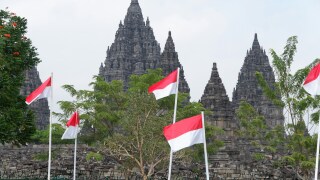lead
Transfer Pricing
features sponsored features special focus local insights
-
-
Intra-Asian trade represents nearly two thirds of total Asian trade as of 2016, according to the Asian Development Bank. This is in stark contrast to the past two years where the large markets of the US and the European Union dominated the majority of Asian exports. As with the rest of the world, however, trade volumes in Asia have grown at a slower rate over the past two years, although the growth in trade amongst regional trading partners has generally outpaced the overall growth in trade. What does all this mean? Intra-Asian trade will continue to increase its share of total Asian trade flows, making the need for a regional trade pact imperative as global supply chains consolidate in Asia Pacific. With the Trans-Pacific Partnership (TPP) nearly, though not entirely, eliminated as a possibility the region looks to the China-led Regional Comprehensive Economic Partnership Agreement (RCEP) to fill the gap. In order to achieve the promise of fully integrated Asia Pacific trade, however, some argue that the RCEP will need to be more ambitious and address more than simply tariff rate reductions.
-
Víctor Manuel Avilés
Sponsored Features
-
Sponsored by CMSTaxpayers may have to refine their approach in staving off tax controversy. A podcast held by ITR in collaboration with CMS explains why audits and tax litigation may never be the same
-
Sponsored by insightsoftwareJoin Deloitte and insightsoftware on November 4 for a free ITR webinar exploring how operational transfer pricing transformation can streamline data, improve compliance, and integrate business and financial processes across multinational organisations
-
Sponsored by DeloitteHow can tax leaders enhance process ownership, manage distributed teams, and balance talent with technology? James Paul of Deloitte UK presents valuable insights from the Tax Transformation Trends 2025 report
Special Focus
-
Sponsored by DDTC ConsultingDavid Hamzah Damian of DDTC Consulting examines recent procedural changes in Indonesia’s tax disputes process and the Supreme Court’s stance on tax evidence, highlighting key implications for taxpayers facing audits, objections, and appeals
-
Sponsored by DeloitteEddie Morris, Josep Serrano Torres, and Jen Breeze of Deloitte compare transfer pricing controversies in the pharmaceutical and automotive sectors, highlighting how DEMPE functions, regulation, and intangibles drive both common themes and sector-specific challenges
-
Sponsored by DeloitteCarlos Serrano Palacio and Szymon Wlazlowski of Deloitte examine how transfer pricing complexities arise in special purpose vehicle investments and outline key considerations in navigating their unique risk, substance, and valuation challenges
Local Insights
-
Sponsored by Lakshmikumaran & SridharanRaghav Rajeev and Nimrah Ali of Lakshmikumaran & Sridharan analyse the approaches taken by taxpayers and Indian judicial bodies on contested tax payments under the country’s goods and services tax law
-
Sponsored by Morais Leitão, Galvão Teles, Soares da Silva & AssociadosBernardo Mesquita of Morais Leitão, Galvão Teles, Soares da Silva & Associados examines how AI can enhance tax administration efficiency while raising significant transparency, accountability, and taxpayer-rights concerns that governments must address
-
Sponsored by VdATiago Marreiros Moreira, Rita Simão Luís, and Nadine Gomes of VdA analyse how recent EU VAT and energy tax developments shape electric mobility, highlighting opportunities from CJEU rulings and challenges of multi-layered tax frameworks










